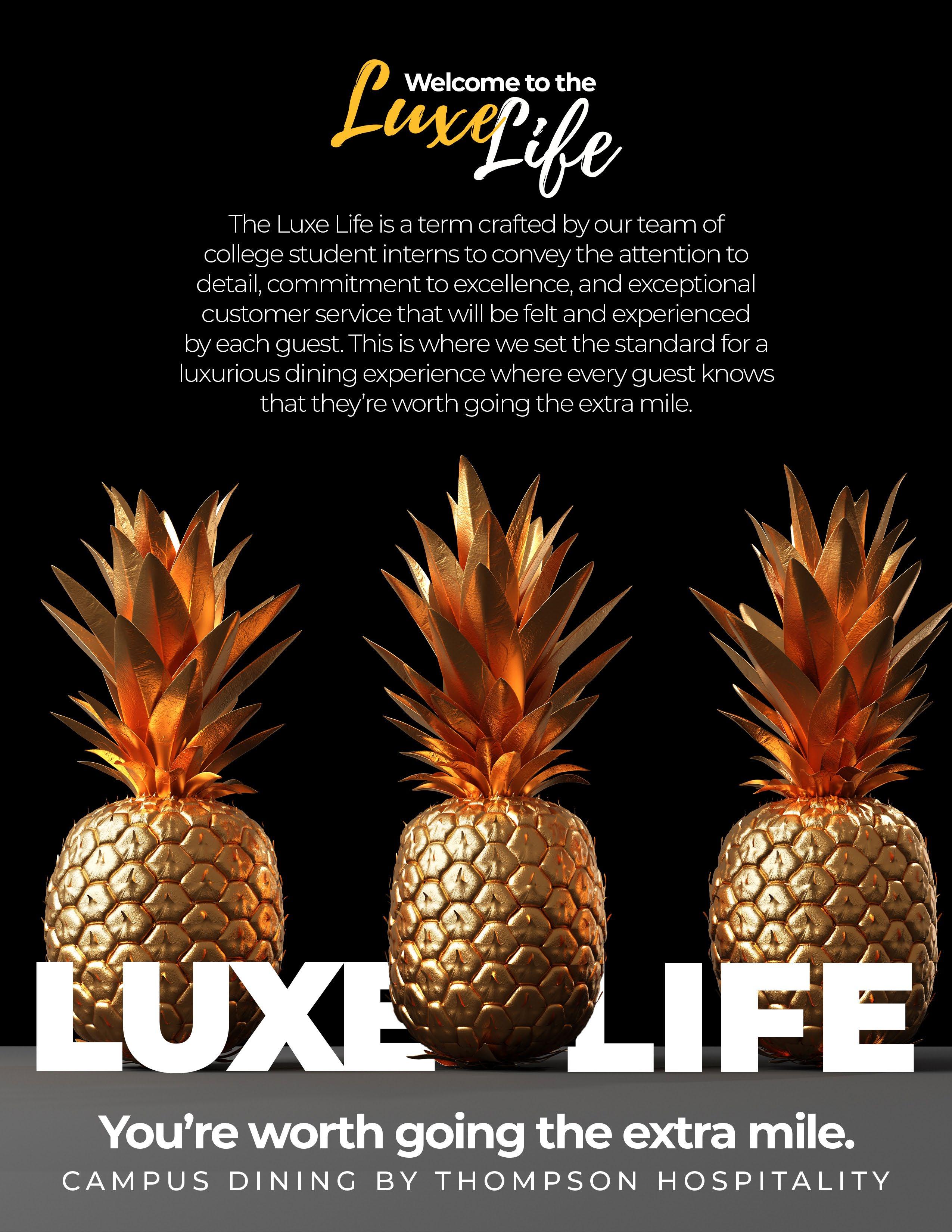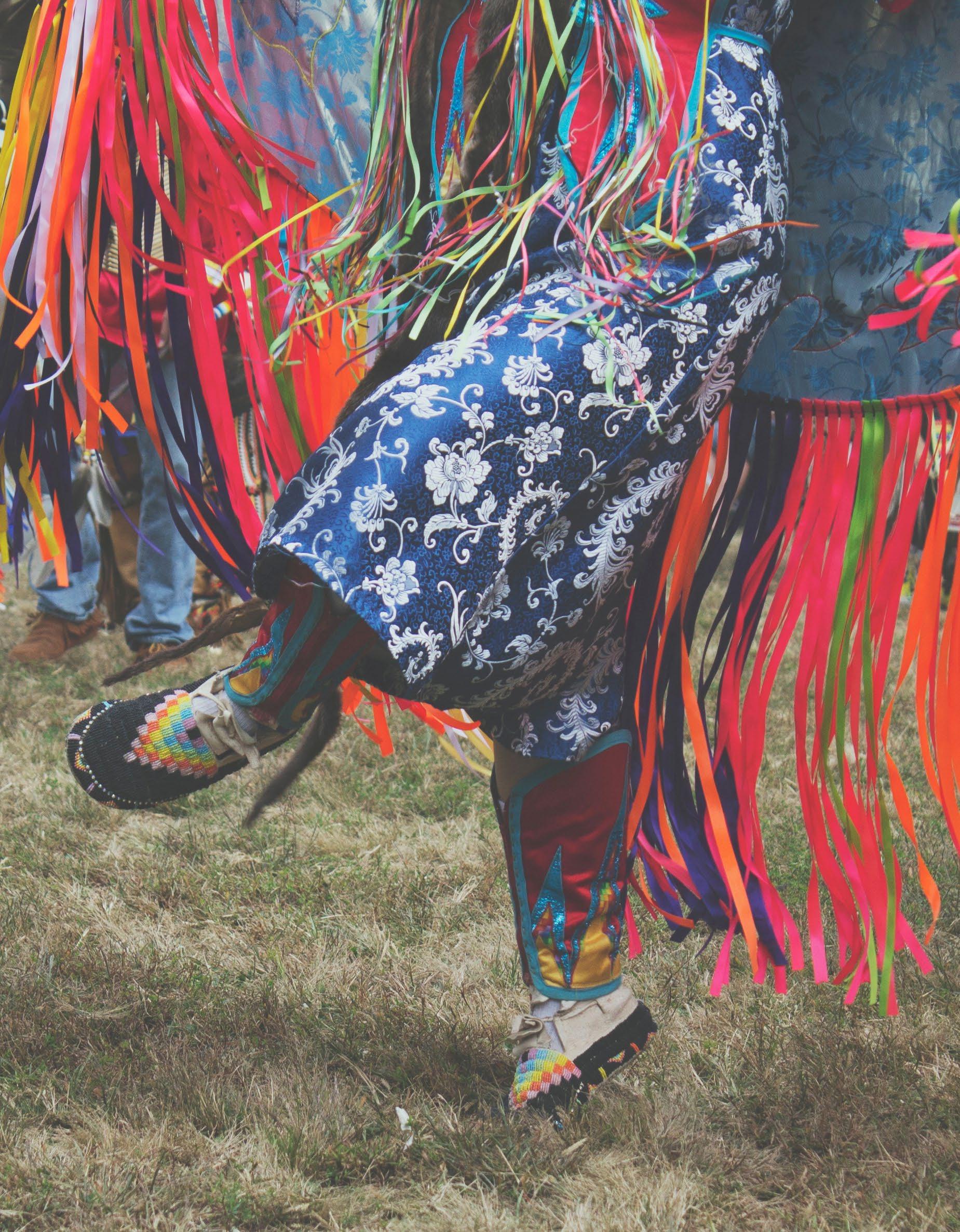
CAMPUS DINING MAGAZINE NOV 2022 Falling Into Finals Healthy Holiday Hunger: Food Related Diseases Making Friendsgiving Memorable Dishing Out History:Native American Heritage Month

As we transition into the month of November, Campus Dining by Thompson Hospitality is leaning into our sense of gratitude. As valued partners, we want to express the gratitude we have for the pleasure of serving your campus communities.

Together, we have built strong dining programs, and created a campus dining culture that we can all be proud to offer our higher education partners. We have created a strong bond that has lasted through the test of time, through pandemics and economic hardship, we have survived TOGETHER.
Just one month ago, we celebrated our 30th anniversary in business. We want to thank you for making this possible with your partnership. Continually moving forward, we look toward the future to create even more innovative programming. Our corporate team is busy researching, building, and preparing for the program for the spring semester. Meanwhile, our operational teams will continue to work hard on your campuses to execute the vision for the remainder of the fall semester.
As we approach this month full of reflection and gratitude, when everyone asks themselves and their peers, “What are you grateful for?” Know that Thompson Hospitality is grateful for each and every one of our partnerships.
 Maurice P. Jenoure, Chief Operating Officer
Maurice P. Jenoure, Chief Operating Officer
 Dina Zaikouk, Vice President of Operations
Dina Zaikouk, Vice President of Operations
Together We Thrived. Together We Move Forward. forward


Falling into Finals:
Finals Week
Preparation
After a long four and a half months, the fall semester is finally winding down. As students are packing up and coordinating with family to book tickets home, one thing is on everyone’s mind- how to tackle finals week. Finals week typically comes soon after people return from Thanksgiving break and reminds students to check on the status of their grades. Worries usually fill in the air, and every inch of campus is plagued with anxiety and stress. Simply hearing “don’t stress” does not add the motivation some think it does for students. However, many ways can prevent extra stress, test anxiety, and panic while taking final exams.
Final exams in college usually incorporate material taught after midterm exams up until a certain point before the last. The final grade, however, includes every assignment from the beginning to the end of the semester. Everyone handles finals week differently. Nevertheless, to ensure a smooth sailing finals week, below are a few tips.
Review your work and grades before Midterms
Before you take your exam, look at your progress thus far. How is your grade in your classes? Is there room for improvement? What areas do you need to focus on? These questions allow you to create a plan of action going into exams. Seeing where you are will help you know where you are going. Your midterm grades are not your final grades; therefore, do not let them discourage you.
Talk to your professors. It is essential to visit your professor’s office during hours to discuss your progress in the class one on one. There may be some things that are unclear in the grade book and assignment grades missing that your professor can offer clarity on. This is also a great time to ask questions about the upcoming test to know what material will be discussed if they did not clarify during class. While meeting with your professor, take notes on what is being said and list any tips they may offer about moving forward.
Catch up on Assignments
Each professor has policies on late and missing assignments that they abide by. Always check and review your syllabus for your classes to see what each professor allows. If they permit late work, complete the assignment as soon as possible to get points. Many professors will deduct points from the assignment because it is late. Be mindful that as much as deducted points are disheartening, they are better than zero. Something is always better than nothing, especially if you put your all into it.
Take time for yourself. Amid all the studying, catching up on assignments, and talking to your professor, there needs to be time taken out for yourself. Not taking breaks during studying will result in burnout and poor concentration. SocialTriggers. com noted that humans are not built to concentrate for more than eight hours, and not taking breaks in between will have harmful side effects such as a lack of focus and damaged eyes. Study breaks must be taken during the studying to allow the brain to rest and properly soak up and resonate with the information. The length of your break can be based on the time you study. If you study for hours, take a break every 25 minutes to relax your brain. During your break, it is recommended that it be productive, meaning your mind is at peace.

6 | NOV2022 forward



REOpen Our DM’s Let’s get real. How are we doing? Shoot us a DM and let us know FIND US ON INSTAGRAM OR SCAN THE QR CODE IG: @thcares Find your school + forward magazine
Making Friendsgiving Memorable
The time between Thanksgiving and the beginning of December is often tricky for college students. Many students are miles away from their homes, so celebrating the holidays may not always include family. Recently, a new way to celebrate a day full of gratitude has grown popular.
Friendsgiving is a version of Thanksgiving that involves celebrating and gathering with friends on or near the national holiday. There are many ways to plan and execute the new popular holiday; within each friend group, their traditions are just like Thanksgiving. The origins of this gathering can be dated back to 2007, when it was used on different social media posts to describe the kind of meal. The word gradually made its way into other media outlets like the Pensacola News Journal in an article giving alternative options to celebrate Thanksgiving.
The continuation of the word’s usage followed through the early 2010s and quickly became a great activity to do with friends before or after the family-driven holiday.
Gather in the dining hall at the same time!
A simple way to celebrate each other can be gathering in the dining hall at the same time for dinner. Friendsgiving is a large dinner between individuals; therefore, meeting up with friends for a nice dinner in the dining hall works too. To spice up the night, you and your friends can bring games to play throughout the dinner.
A college is a place where lifelong friendships are made. You are with a group of people every day, trying to accomplish the same goal together - to graduate. Those connections are irreversible and one of a kind. Friendsgiving is a time to celebrate and reminisce on the memories made thus far.
During the celebration, there is room to create new memories with each other and start a tradition that can last outside of the campus. It is great to have a Friendsgiving gathering for your peers that are unable to go home. Many schools allow a three-to-four-day weekend following the Thanksgiving holiday before the completion of the fall semester. Due to financial situations, many students cannot go home for a holiday. Bus and plane tickets may be too expensive to obtain once for Thanksgiving and again for winter break.
To have a Friendsgiving celebration, you must remember there is no correct way to have one. Below are a few ways you can make it a memorable time:
Host a potluck!
A potluck is another easy way to have Friendsgiving. Everyone must bring their favorite dish to share with the collective. This is a great way to indulge in new food items and learn something new about your friends through the dishes they bring.

Host a game night!
Like playing games in the dining hall, having a game night will make memories and bring friends closer. Instead of having individual games, you and your friends can split up into teams for the night and battle for bragging rights. Each person can bring a game such as Jenga, Uno, or Twister; throughout the night, teams can go head-to-head.
forward 8 |NOV2022




DINING EVENTS + NOV EMBER CLICK TO SEE YOUR UPCOMING EVENTS

Native American HERITAGE MONTH
Dishing out History:
Every ingredient of every recipe has a story of a culture. From the pain and hardships to triumph and victory, food shows the true history of the people of the past. Indigenous Americans (commonly known as Native Americans) are a group of people that arguably do not have commercialized food in America, but their influence is interwoven into the country.
Indigenous Americans are said to have arrived in what is now the United States over 20,000 years before Christopher Columbus made his voyage. Before European settlers arrived, Indigenous Americans had their tradition, culture, and way of life.
Before colonization, there were about 600 Indigenous tribes. They all had their trading systems, schools, religions, medical practices, hobbies, and, most importantly, diets. Their diets were based on the ancestral connection that had them focus on agriculture. Many tribes only ate what was available, and the meat was not always an option.
Tribes like Choctaw primarily ate a plant-based diet before settlers came to their land. Their diets included cultivated plants, such as corn, pumpkin, beans, wild rice, squash, wild fruit, herbs, nuts, and green. To preserve food throughout the year, they would do a process to dry out the items. In certain areas, people would also trade their plants for bison meat to use for food.
In 1492, when settlers arrived, there were significant changes that led to massive destruction of the land.
During the first evidence of contact, settlers brought abundant livestock to the Indigenous land, such as sheep, goats, cattle, pigs, and horses. Regarding plants, they also brought peaches, apricots, plums, cherries, melons, apples, grapes, and wheat. This was a great addition to the supplies they already had; with horses, they could travel more efficiently for trade.
However, sharing recipes and ingredients did not last as the settlers began to grow and expand their territory. Mass destruction began to plague the land, and over 10 million Indigenous people were killed while the settlers forcibly displaced the rest.
In the beginning, new government-issued rations were given to Indigenous people twice a month and consisted of flour, lard, coffee, sugar, and canned meat (also known as spam). The dramatic change in diet led to newfound traditional food.
A dish that came from this era is “the Indian taco.” The twist on the traditional Mexican dish consisted of a combination of governmental ration and conventional Indigenous foods. Ingredients included wheat flour, baking powder, lard, processed yellow cheese, beans, and wild animal meat. If able, they would add green chiles and tomatoes too.
Like “the Indian taco,” Indigenous people today continue to home in on their ancestral roots by including traditional ingredients in their meals. Wild rice is another example as it incorporates an indigenous grain, mushrooms, cranberries, wild onions, and green peas. Another dish that includes elements of the past is Wojapi. Wojapi is a thick pudding made of wild berries like blackberries, strawberries, and chokecherries. Honey is added to the dish to enhance the sweetness, while corn flour is mixed to help with the thickness. It can be used as a sauce for desserts or on meats.
It is hard to talk about the Indigenous culture without mentioning the past. Everything, including the food, has a history worth mentioning. During November, it is vital to acknowledge the past and continue forwarding the future. If there is an Indigenous restaurant in the area, try it! Connect with the past people and support their efforts for a better future.
11 |+NOVEMBER

DON’T FORGET TO CHECK OUT!THTV CLICK FOR ON DEMAND TV FOR COLLEGE DINING Native American Heritage Month TH Teaches: Thanksgiving Collard Greens Chef Talk: The Art of Memorable Events
HEALTHY HOLIDAY
Food Related Diseases
Everyone has a dish they are looking forward to during the holiday season. After a year-long of work, school, and stress, it is finally time to unwind with the people who mean the most and indulge in the food that brings the most joy.
Our favorite foods may bring us happiness, but too much of anything can harm us. It is imperative to understand the risk our favorite food can put us to monitor our intake.

According to the United States Department of Agriculture, almost half of all Americans in 2017 reported having one or more preventable chronic diseases related to their diet. The unhealthy eating patterns have resulted in poor bone health, high blood pressure, type 2 diabetes, cardiovascular disease, and even some cancers. There are many different causes of chronic disease. However, having too much salt, sugar, or fat can put people at risk when it comes to diets. With the holiday season near and eating patterns changing, it Is common that the intake of salt, sugar, and fat begins to rise. It is easy to overindulge from the many meals and social gatherings to the new items at our favorite restaurants. Though it is common for people to consume more calories during this time, it quickly becomes harmful if not monitored properly. African Americans are more likely to get hypertension (high blood pressure) than any
other race. Within the community, middle-aged adults are at a greater risk. The leading cause of high blood pressure is a diet high in salt, fat, or cholesterol, according to FamilyDoctor.org. It is measured through a blood pressure monitor utilized during all doctor visits. The primary way to lower or prevent high blood pressure is based on lifestyle choices, including diet.
African Americans, the Latinx community, American Indians, and some Asian Americans are at a higher risk for Type 2 diabetes. The cause of Type 2 diabetes varies because though it is a result of dietary choices, it can also be genetic.
Throughout this holiday season, remember to monitor your food intake while indulging in your favorite meals. The less processed foods with added sugar, the better for your body and your family in the long run. Because Type 2 diabetes can be genetic, a person is more likely to get diabetes if someone in the family already has it. The allotted downtime that is given during the holiday season is excellent and can benefit everyone. However, creating a balance between treating yourself and caring for your health can and will go a long way.
+ forward magazine | 13

14 | +NOVEMBER click to see your upcoming events

| 15

Marketing Contacts Daniela‑Gabrielle Smallwood, Head of Marketing and Communications daniela.smallwood@thompsonhospitality.com (571) 444–7430 Cindy Horstman, Field Marketing Director chorstman@thompsonhospitality.com (804) 640–4136 Editorial Staff Gina Godwin, Creative Director Heaven Smallwood, Chief Editor DeAndre Taylor, Graphic Designer Yolanda Waters, Lead Writer



 Maurice P. Jenoure, Chief Operating Officer
Maurice P. Jenoure, Chief Operating Officer
 Dina Zaikouk, Vice President of Operations
Dina Zaikouk, Vice President of Operations

















